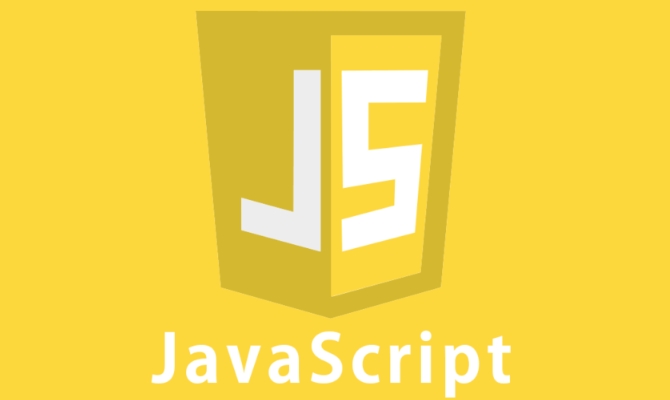Building a Design System with Storybook and React
Jul 30, 2025 am 05:05 AMFirst, use npx storybook init to install and configure Storybook in React project, run npm run storybook to start the local development server; 2. Organize component file structure by function or type, and create corresponding .stories.js files to define different states in each component directory; 3. Use Storybook's Args and Controls systems to achieve dynamic attribute adjustments to facilitate testing of various interactive states; 4. Use MDX files to write rich text documents containing design specifications, accessibility instructions, etc., and support MDX loading through configuration; 5. Define design tokens through themes and use ThemeProvider to globally inject theme styles in preview.js; 6. Integrate Jest and React Testing Library performs unit testing, visual regression testing with Chromatic, and checks for accessibility issues via @storybook/addon-a11y. Finally, a scalable design system that supports independent development, visual documents, automated testing, and promotes design and development collaboration. This system can achieve efficient reuse across teams by gradually iterating components, becoming a necessary tool for improving UI consistency and development efficiency.

Building a design system with Storybook and React is a powerful way to create consistent, reusable UI components that scale across teams and products. Storybook provides an isolated development environment for UI components, making it easier to build, test, and document them in isolation—without relying on the full app. When paired with React, this combo becomes a go-to setup for modern design systems.

Here's how to approach it effectively.
1. Set Up Storybook with React
Start by adding Storybook to your React project. If you're using Create React App or a standard React setup, the easiest way is using the automated CLI:

npx storybook init
This command installs Storybook, adds the necessary configuration files, and sets up example stories. Once done, run:
npm run storybook
This starts the Storybook development server, usually at http://localhost:6006 , where you can view your components in real time.

Tip: The init command works well with most React settings, including Vite and Next.js. If you're using a custom webpack config, you might need to adjust
.storybook/main.jsaccordingly.
2. Structure Your Components and Stories
A well-organized file structure is key to maintainability. Group components logically—typically by feature or type (eg, atoms , molecules , organisms ), or by category like Button , Form , Navigation .
Example structure:
src/ ├── components/ │ ├── Button/ │ │ ├── Button.jsx │ │ ├── Button.stories.js │ └── Button.module.css │ ├── Input/ │ │ ├── Input.jsx │ └── Input.stories.js ├── styles/ │ └── theme.js
In each .stories.js file, define how the component should be rendered in different states:
// Button.stories.js
import { Button } from './Button';
export default {
title: 'Components/Button',
component: Button,
argTypes: {
variant: { control: 'select', options: ['primary', 'secondary'] },
},
};
export const Primary = {
args: {
label: 'Click me',
variant: 'primary',
},
};
export const Disabled = {
args: {
label: 'Disabled',
disabled: true,
},
};This creates interactive controls (like dropdowns for props) and lets designers and developers explore variations visually.
3. Use Args and Controls for Dynamic Testing
Storybook's Args system allows you to change component inputs on the fly. Combined with Controls , users can tweak props directly in the UI—great for testing edge cases and showcasing flexibility.
Example:
argTypes: {
size: { control: 'radio', options: ['small', 'medium', 'large'] },
onClick: { action: 'clicked' }, // logs clicks
}This means QA, PMs, or designers can interact with the button and see how it behaves when clicked or resized—without touching code.
Pro tip: Use
controls: { exclude: ['id', 'className'] }to hide internal or non-visual props from the controls panel.
4. Document with MDX and Add Design Guidelines
Go beyond code examples. Use MDX (Markdown JSX) to write rich documentation that includes design tokens, usage guidelines, accessibility notes, and even Figma links.
Create a Button.stories.mdx file:
import { Meta, Story, Canvas } from '@storybook/blocks';
import * as ButtonStories from './Button.stories.js';
<Meta title="Components/Button" component={Button} />
# Button
Use buttons to trigger actions. Prefer primary buttons for main actions, secondary for alternatives.
<Canvas>
<Story of={ButtonStories.Primary} />
</Canvas>
## Accessibility
Always include descriptive labels. Avoid icon-only buttons unless properly labeled with `aria-label`. Then configure Storybook to load MDX files by updating .storybook/main.js :
module.exports = {
stories: ['../src/**/*.stories.@(js|jsx|ts|tsx|mdx)'],
// ...
};Now your design system becomes a living style guide.
5. Integrate Design Tokens and Theming
Share visual styles (colors, typography, spacing) via a theme object, often using styled-components , emotion , or CSS-in-JS.
Example theme:
// theme.js
export const theme = {
colors: {
primary: '#007bff',
secondary: '#6c757d',
},
spacing: (factor) => `${0.5 * factor}rem`,
typography: {
heading: 'bold 1.5rem system-ui',
},
}; Wrap your stories with a decorator to apply the theme globally in .storybook/preview.js :
import { ThemeProvider } from 'styled-components';
import { theme } from '../src/styles/theme';
export const decorators = [
(Story) => (
<ThemeProvider theme={theme}>
<Story />
</ThemeProvider>
),
];Now all components render with consistent styling.
6. Add Testing and Automation
A robust design system needs tests. Combine:
- Jest React Testing Library for unit and behavior tests.
- Chromatic (a Storybook add-on) for visual regression testing.
Install Chromatic:
npx chromatic --project-token=<your-token>
It runs in CI and compares every story against previous versions, catching unintended visual changes.
Also consider adding a11y addon to catch accessibility issues:
npm install @storybook/addon-a11y
Then enable it in .storybook/main.js :
addons: ['@storybook/addon-a11y'];
Now you'll see an Accessibility tab in the UI with automated checks.
Final Thoughts
Building a design system with Storybook and React isn't just about components—it's about creating a shared language between design and development. With the right setup, you get:
- Isolated component development
- Interactive documentation
- Visual testing and consistency
- Collaboration-friendly interfaces
Start small (buttons, inputs), enforce consistency early, and grow iteratively. Over time, your design system becomes a force multipleer for product teams.
Basically, if you're using React and care about UI quality, Storybook isn't optional—it's essential.
The above is the detailed content of Building a Design System with Storybook and React. For more information, please follow other related articles on the PHP Chinese website!

Hot AI Tools

Undress AI Tool
Undress images for free

Undresser.AI Undress
AI-powered app for creating realistic nude photos

AI Clothes Remover
Online AI tool for removing clothes from photos.

Clothoff.io
AI clothes remover

Video Face Swap
Swap faces in any video effortlessly with our completely free AI face swap tool!

Hot Article

Hot Tools

Notepad++7.3.1
Easy-to-use and free code editor

SublimeText3 Chinese version
Chinese version, very easy to use

Zend Studio 13.0.1
Powerful PHP integrated development environment

Dreamweaver CS6
Visual web development tools

SublimeText3 Mac version
God-level code editing software (SublimeText3)

Hot Topics
 Why should you place tags at the bottom of the ?
Jul 02, 2025 am 01:22 AM
Why should you place tags at the bottom of the ?
Jul 02, 2025 am 01:22 AM
PlacingtagsatthebottomofablogpostorwebpageservespracticalpurposesforSEO,userexperience,anddesign.1.IthelpswithSEObyallowingsearchenginestoaccesskeyword-relevanttagswithoutclutteringthemaincontent.2.Itimprovesuserexperiencebykeepingthefocusonthearticl
 What is event bubbling and capturing in the DOM?
Jul 02, 2025 am 01:19 AM
What is event bubbling and capturing in the DOM?
Jul 02, 2025 am 01:19 AM
Event capture and bubble are two stages of event propagation in DOM. Capture is from the top layer to the target element, and bubble is from the target element to the top layer. 1. Event capture is implemented by setting the useCapture parameter of addEventListener to true; 2. Event bubble is the default behavior, useCapture is set to false or omitted; 3. Event propagation can be used to prevent event propagation; 4. Event bubbling supports event delegation to improve dynamic content processing efficiency; 5. Capture can be used to intercept events in advance, such as logging or error processing. Understanding these two phases helps to accurately control the timing and how JavaScript responds to user operations.
 A definitive JS roundup on JavaScript modules: ES Modules vs CommonJS
Jul 02, 2025 am 01:28 AM
A definitive JS roundup on JavaScript modules: ES Modules vs CommonJS
Jul 02, 2025 am 01:28 AM
The main difference between ES module and CommonJS is the loading method and usage scenario. 1.CommonJS is synchronously loaded, suitable for Node.js server-side environment; 2.ES module is asynchronously loaded, suitable for network environments such as browsers; 3. Syntax, ES module uses import/export and must be located in the top-level scope, while CommonJS uses require/module.exports, which can be called dynamically at runtime; 4.CommonJS is widely used in old versions of Node.js and libraries that rely on it such as Express, while ES modules are suitable for modern front-end frameworks and Node.jsv14; 5. Although it can be mixed, it can easily cause problems.
 How does garbage collection work in JavaScript?
Jul 04, 2025 am 12:42 AM
How does garbage collection work in JavaScript?
Jul 04, 2025 am 12:42 AM
JavaScript's garbage collection mechanism automatically manages memory through a tag-clearing algorithm to reduce the risk of memory leakage. The engine traverses and marks the active object from the root object, and unmarked is treated as garbage and cleared. For example, when the object is no longer referenced (such as setting the variable to null), it will be released in the next round of recycling. Common causes of memory leaks include: ① Uncleared timers or event listeners; ② References to external variables in closures; ③ Global variables continue to hold a large amount of data. The V8 engine optimizes recycling efficiency through strategies such as generational recycling, incremental marking, parallel/concurrent recycling, and reduces the main thread blocking time. During development, unnecessary global references should be avoided and object associations should be promptly decorated to improve performance and stability.
 How to make an HTTP request in Node.js?
Jul 13, 2025 am 02:18 AM
How to make an HTTP request in Node.js?
Jul 13, 2025 am 02:18 AM
There are three common ways to initiate HTTP requests in Node.js: use built-in modules, axios, and node-fetch. 1. Use the built-in http/https module without dependencies, which is suitable for basic scenarios, but requires manual processing of data stitching and error monitoring, such as using https.get() to obtain data or send POST requests through .write(); 2.axios is a third-party library based on Promise. It has concise syntax and powerful functions, supports async/await, automatic JSON conversion, interceptor, etc. It is recommended to simplify asynchronous request operations; 3.node-fetch provides a style similar to browser fetch, based on Promise and simple syntax
 var vs let vs const: a quick JS roundup explainer
Jul 02, 2025 am 01:18 AM
var vs let vs const: a quick JS roundup explainer
Jul 02, 2025 am 01:18 AM
The difference between var, let and const is scope, promotion and repeated declarations. 1.var is the function scope, with variable promotion, allowing repeated declarations; 2.let is the block-level scope, with temporary dead zones, and repeated declarations are not allowed; 3.const is also the block-level scope, and must be assigned immediately, and cannot be reassigned, but the internal value of the reference type can be modified. Use const first, use let when changing variables, and avoid using var.
 JavaScript Data Types: Primitive vs Reference
Jul 13, 2025 am 02:43 AM
JavaScript Data Types: Primitive vs Reference
Jul 13, 2025 am 02:43 AM
JavaScript data types are divided into primitive types and reference types. Primitive types include string, number, boolean, null, undefined, and symbol. The values are immutable and copies are copied when assigning values, so they do not affect each other; reference types such as objects, arrays and functions store memory addresses, and variables pointing to the same object will affect each other. Typeof and instanceof can be used to determine types, but pay attention to the historical issues of typeofnull. Understanding these two types of differences can help write more stable and reliable code.
 How to traverse the DOM tree (e.g., parentNode, children, nextElementSibling)?
Jul 02, 2025 am 12:39 AM
How to traverse the DOM tree (e.g., parentNode, children, nextElementSibling)?
Jul 02, 2025 am 12:39 AM
DOM traversal is the basis of web page element operation. Common methods include: 1. Use parentNode to obtain the parent node, and can be chained to find it upward; 2. children return a collection of child elements, accessing the first or end child elements through the index; 3. nextElementSibling obtains the next sibling element, and combines previousElementSibling to realize the same-level navigation. Practical applications such as dynamically modifying structures, interactive effects, etc., such as clicking the button to highlight the next brother node. After mastering these methods, complex operations can be achieved through combination.






